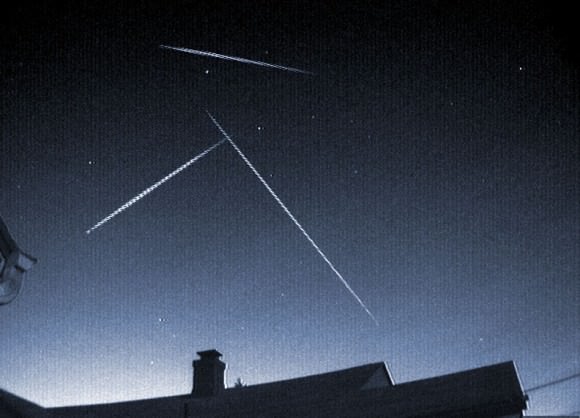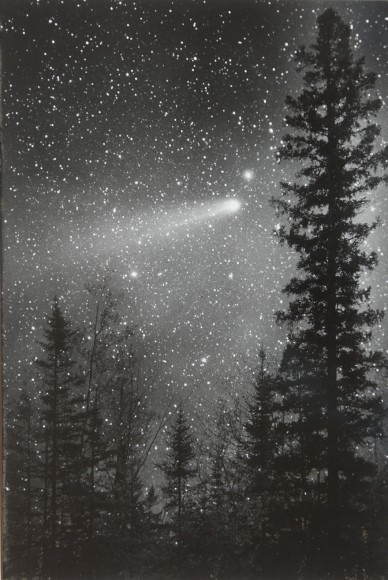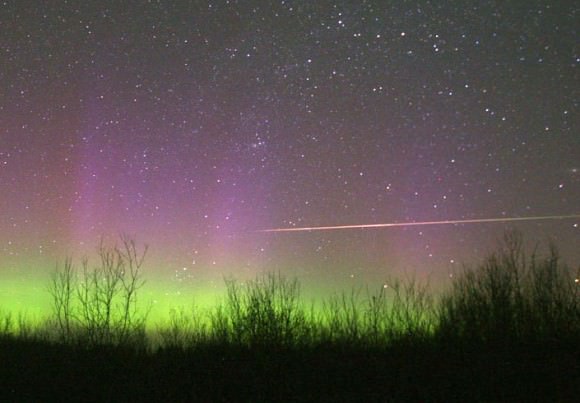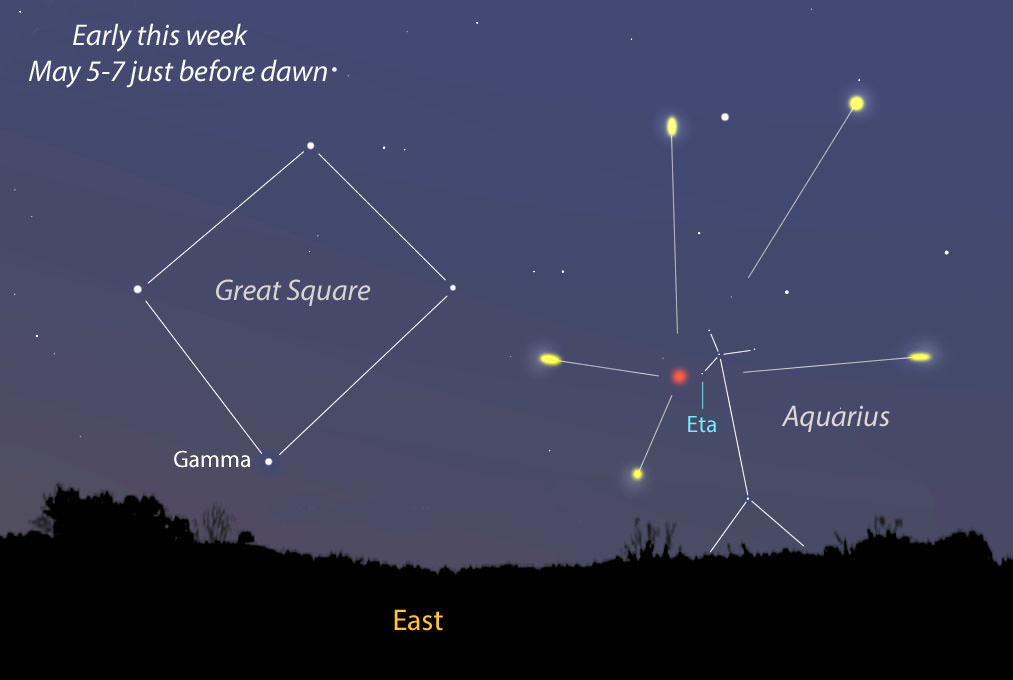UPDATE: Watch a live webcast of the meteor shower, below, from NASA’s Marshall Space Flight Center during the night of Monday, May 5 to the early morning of May 6.
Halley’s Comet won’t be back in Earth’s vicinity until the summer of 2061, but that doesn’t mean you have to wait 47 years to see it. The comet’s offspring return this week as the annual Eta Aquarid meteor shower. Most meteor showers trace their parentage to a particular comet. The Perseids of August originate from dust strewn along the orbit of comet 109P/Swift-Tuttle, which drops by the inner solar system every 133 years after “wintering” for decades just beyond the orbit of Pluto, but the Eta Aquarids (AY-tuh ah-QWAR-ids) have the best known and arguably most famous parent of all – Halley’s Comet. Twice each year, Earth’s orbital path intersects dust and rock particles strewn by Halley during its cyclic 76-year journey from just beyond Uranus to within the orbit of Venus. When we do, the grit meets its demise in spectacular fashion as wow-inducing meteors.

Meteoroids enter the atmosphere and begin to glow some 70 miles high. The majority of them range from sand to pebble sized but most no more than a gram or two. Speeds range from 25,000-160,000 mph (11-72 km/sec) with the Eta Aquarids right down the middle at 42 miles per second (68 km/sec). Most burn white though ‘burn’ doesn’t quite hit the nail on the head. While friction with the air heats the entering meteoroid, the actual meteor or bright streak is created by the speedy rock exciting atoms along its path. As the atoms return to their neutral state, they emit light. That’s what we see as meteors. Picture them as tubes of glowing gas.
The farther south you live, the higher the shower radiant will appear in the sky and the more meteors you’ll see. For southern hemisphere observers this is one of the better showers of the year with rates around 30-40 meteors per hour. With no moon to brighten the sky, viewing conditions are ideal. Except for maybe the early hour. The shower is best seen in the hour or two before the start of dawn.

From mid-northern latitudes the radiant or point in the sky from which the meteors will appear to originate is low in the southeast before dawn. At latitude 50 degrees north the viewing window lasts about 1 1/2 hours; at 40 degrees north, it’s a little more than 2 hours. If you live in the southern U.S. you’ll have nearly 3 hours of viewing time with the radiant 35 degrees high.

Northerners might spy 5-10 meteors per hour over the next few mornings. Face east for the best view and relax in a reclining chair. One good thing about this event – it won’t be anywhere near as cold as watching the December Geminids or January’s Quadrantids. We must be grateful whenever we can.
Meteor shower members can appear in any part of the sky, but if you trace their paths in reverse, they’ll all point back to the radiant. Other random meteors you might see are called sporadics and not related to the Eta Aquarids. Because Aquarius is home to at least two radiants, we distinguish the Etas, which radiate from near Eta Aquarii, from the Delta Aquarids, an unrelated shower active in July and August.
Wishing you clear skies and plenty of hot coffee at the ready.


looks like there was an opening act earlier today over Toronto. Bright daytime fireball sighted with booming sounds heard afterwards.
more about it and video here:
http://globalnews.ca/news/1310092/bright-meteor-lights-up-the-sky-over-toronto-eastern-ontario/